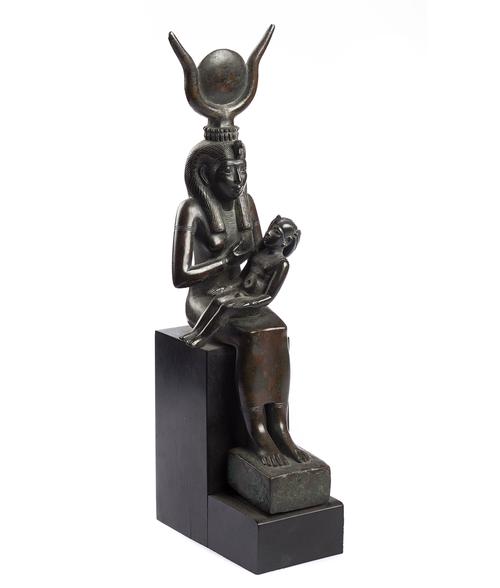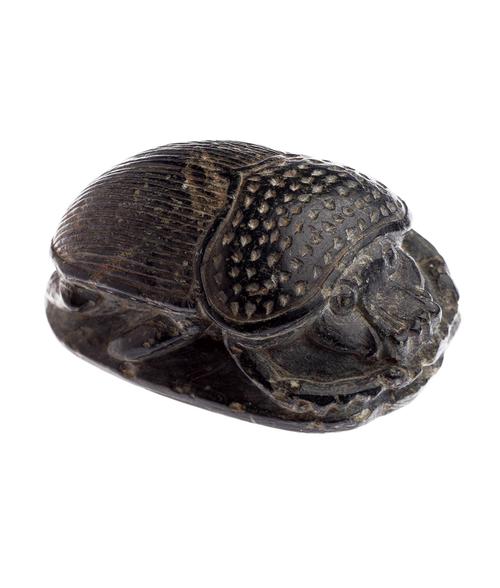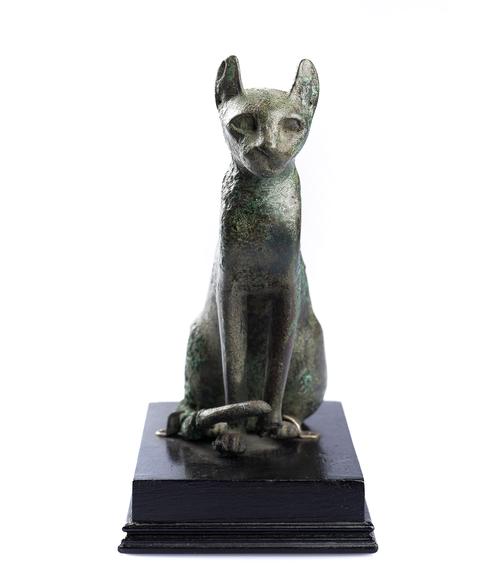
Figurine of Isis and Horus
Late Period (26th Dynasty), 664-525BCE; bronze; 24 x 9.4 x 4.8 cm Museum number: 3037
This figure depicts Isis wearing a tripartite vulture headdress, surmounted by a horned disk (associating her with Hathor) supporting her infant son Horus. Isis was the sister and wife of Osiris, and was representative of wifely and motherly virtues. After the violent death of Osiris, Isis gave birth to Horus in secret, protecting him so that he could avenge the murder of his father.

Heart scarab
New Kingdom (18th-19th dynasty), 1540-1190 BCE; steatite; 2.4 x 4 x 5.6 cm Museum Number: 4004
The scarab is a type of beetle that lays its eggs in dead matter and thus brings forth new life from death. They became associated by ancient Egyptians with death and regeneration. So-called heart scarabs were amulets wrapped around the heart during mummification. This scarab has an inscription from chapter 30b of the Book of the Dead with a command to the heart not to give evidence against the deceased.

Statuette of Bastet as a cat
Late Period, 747 BC – 332 BCE; bronze and wood; 13.8 x 5.4 x 10.8 cm Museum number: 3418
Freud was no fan of cats, but when one climbed through the window of his home at Berggasse 19, he had a slight change of heart: ‘The cat would inspect in passing the antique objects […]. But when the cat proceeded to make known its archaeological satisfaction by purring and with this lithe grace did not cause the slightest damage, Freud’s heart melted and he ordered milk for it. From then on the cat claimed its rights daily to take a place on the sofa, inspect the antiques, and get its bowl of milk’. Lou Andreas-Salomé, The Freud Journal.